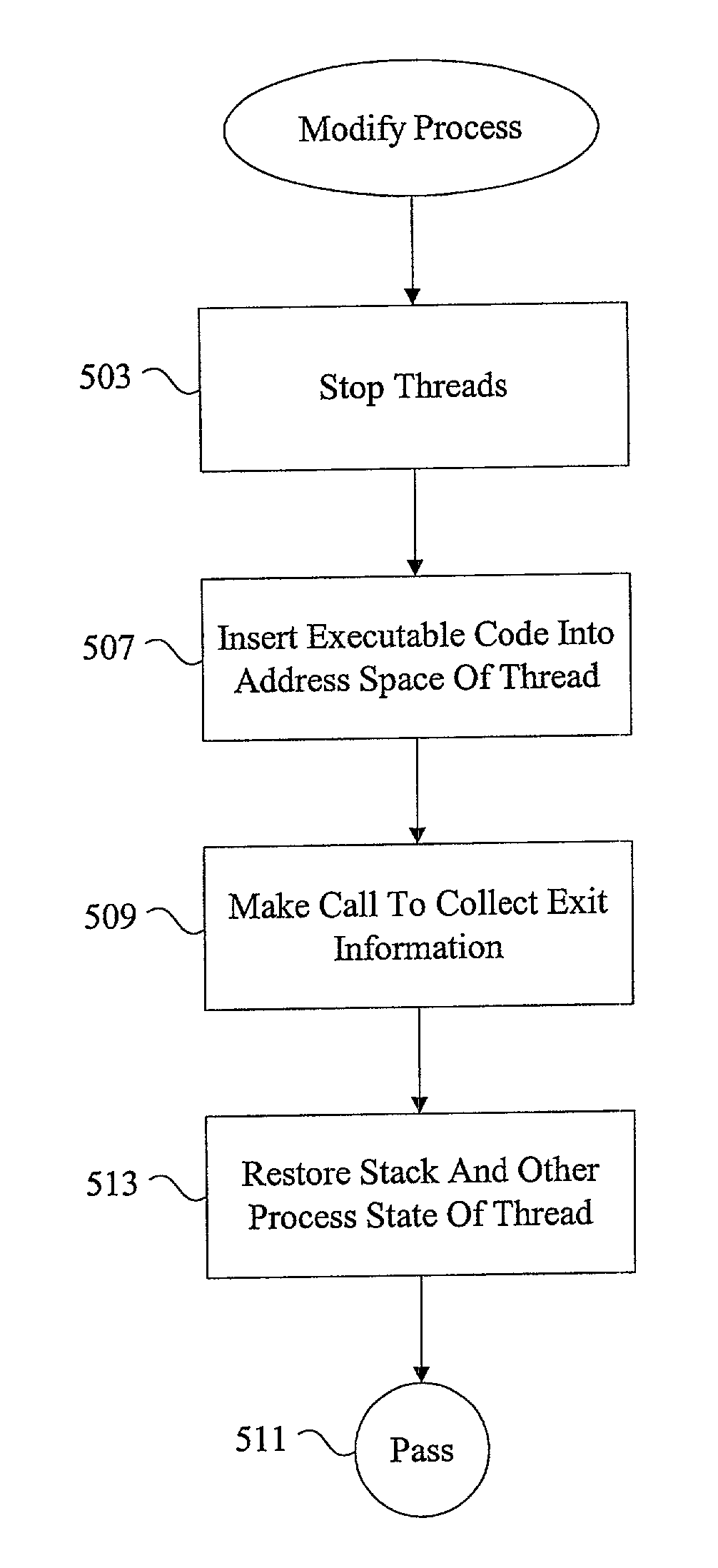Methods and apparatus for managing defunct processes
a technology of process management and process, applied in the direction of program control, multi-programming arrangements, instruments, etc., can solve the problems of not being able to remove all resources associated with the child process, the parent process often fails to make an explicit call, and the conventional operating system provides no techniques for eliminating the defunct child process
- Summary
- Abstract
- Description
- Claims
- Application Information
AI Technical Summary
Benefits of technology
Problems solved by technology
Method used
Image
Examples
Embodiment Construction
[0026]A defunct child process results when the associated parent process fails to handle the exit information of a child process when the child process terminates. The child process may terminate for a variety of reasons. For example, a child process may terminate after a task has been completed, a certain period of time has elapsed, the child process is terminated by the operating system, the child process is terminated by a user or administrator, or the child process is terminated by faulty coding.
[0027]The operating system performs cleanup operations to release resources held by the child process. However, exit information associated with the terminated child process remains after the cleanup operations. Exit information may include the exit status of the child process and the statistical data. The exit information is provided to the parent process so that the parent process can obtain information about how the tasks were performed by the child process. If the parent process does...
PUM
 Login to View More
Login to View More Abstract
Description
Claims
Application Information
 Login to View More
Login to View More - R&D
- Intellectual Property
- Life Sciences
- Materials
- Tech Scout
- Unparalleled Data Quality
- Higher Quality Content
- 60% Fewer Hallucinations
Browse by: Latest US Patents, China's latest patents, Technical Efficacy Thesaurus, Application Domain, Technology Topic, Popular Technical Reports.
© 2025 PatSnap. All rights reserved.Legal|Privacy policy|Modern Slavery Act Transparency Statement|Sitemap|About US| Contact US: help@patsnap.com



